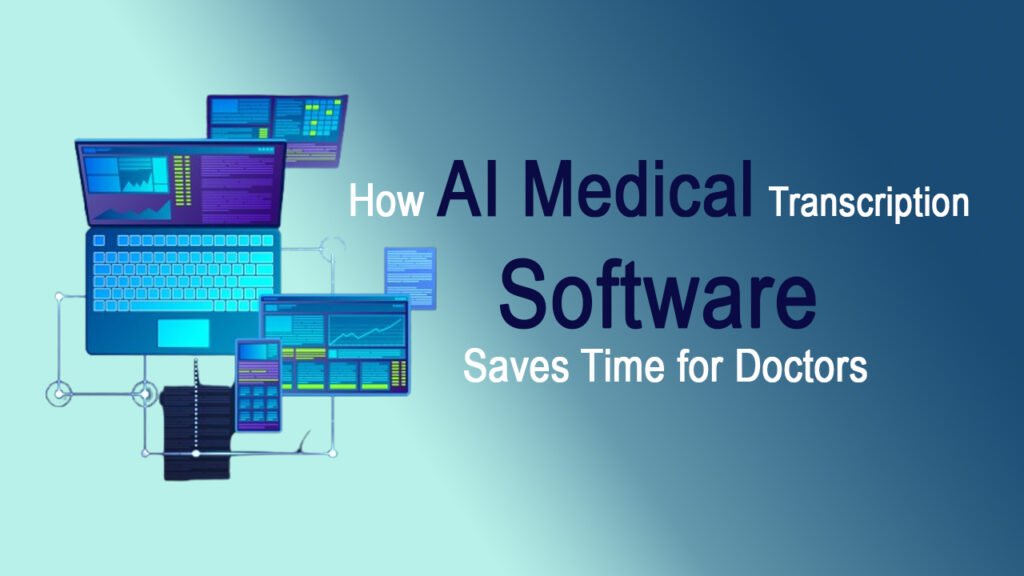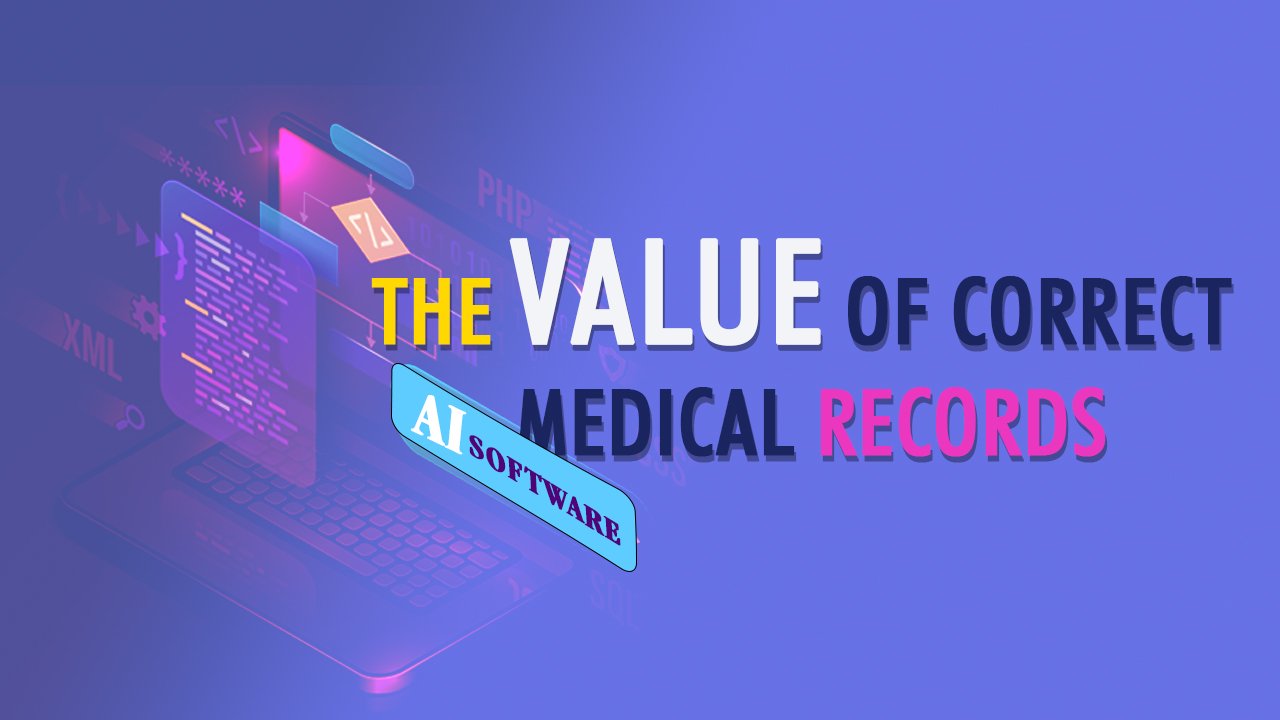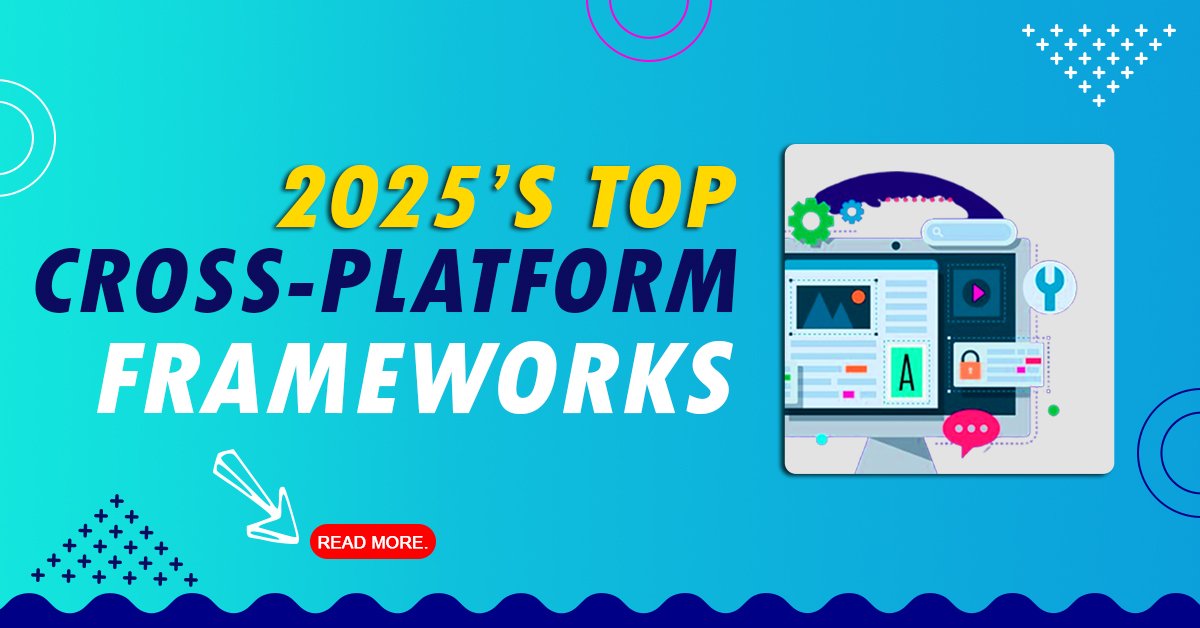- 1 AI Software for Medical Transcription: A Summary
- 2 The Value of Correct Medical Records.
- 3 The Weblog Post’s Goal
- 4 Increased Speed and Efficiency
- 5 Cost-Effectiveness Versus Traditional Methods
- 6 Enhanced Accuracy and Reduced Human Mistakes
- 7 Electronic Health Record (EHR) Integration
- 8 Challenges in AI Medical Transcription Software: Understanding Complex Medical Language.
- 9 Security and Privacy Issues with Patient Data
- 10 Continuous Training and Updates Are Essential
- 11 FAQs
- 12 A Comprehensive Assessment of the Pros and Cons of AI-Driven Medical Transcription Programs.
- 13 Final Thoughts on the Promise of AI for Medical Records.
- 14 Healthcare providers are entreated to explore AI-powered solutions.
AI Software for Medical Transcription: A Summary
AI Medical Transcription Software: AI-powered scientific transcription software employs device mastering, artificial intelligence, and natural language processing (NLP) to transform spoken clinical dictation into correct, dependent text. These solutions automate documentation tactics, permitting healthcare specialists to focus more on affected person care and less on administrative tasks.
The Value of Correct Medical Records.
Accurate scientific recordkeeping is essential for patient safety, felony compliance, and efficient healthcare control. Errors in transcription or misinterpretations can lead to wrong diagnoses, flawed remedies, and felony troubles for healthcare providers. AI-powered transcription software programs pursue to mitigate those risks and enhance workflow performance.
The Weblog Post’s Goal
This blog post explores the pros and cons, in addition to common queries, surrounding the AI scientific transcription software program. It additionally offers information on main AI transcription technologies, their integration with healthcare systems, and demanding situations related to implementation.
Increased Speed and Efficiency
AI transcription software significantly reduces the time required for documentation. Unlike conventional transcription techniques, which may take hours or even days, AI-powered structures can transcribe speech in real time or within minutes. This lets healthcare carriers dedicate greater time to affected person care.
Cost-Effectiveness Versus Traditional Methods
The price of using a human transcriptionist can vary from zero to $0.20 per line of text. AI transcription software enhances documentation performance and reduces hard work costs with the aid of removing the need for complete transcriptionists.
Enhanced Accuracy and Reduced Human Mistakes
To minimize mistakes in transcription, superior AI transcription structures are skilled in recognizing accents, speech patterns, and clinical jargon. Unlike human transcriptionists, who may err because of fatigue, AI software keeps consistency and precision through the years.
Electronic Health Record (EHR) Integration
Many AI-powered medical transcription services seamlessly combine with EHR structures, routinely incorporating transcribed records into patient facts. This integration complements records management, streamlines clinical workflows, and elevates the pleasure of affected person care.
Challenges in AI Medical Transcription Software: Understanding Complex Medical Language.
Despite advancements, AI transcription equipment can still conflict with tricky scientific terminology, abbreviations, and diverse accents. Misinterpretations of such phrases can result in inaccuracies, necessitating human assessment for validation.
The reliance on generation and the capacity for device breakdowns.
Robust PC capabilities and constant internet access are crucial for AI-pushed transcription structures. Any failure or interruption within the gadget can avoid workflow and delay documentation methods.

Security and Privacy Issues with Patient Data
When managing touchy patient records, it’s vital to strictly follow HIPAA (Health Insurance Portability and Accountability Act) and other applicable records safety guidelines. To safeguard affected person statistics, the AI transcription software program should be equipped with sturdy encryption, stringent access controls, and a secure cloud garage.
Continuous Training and Updates Are Essential
AI fashions require ongoing training and updates to beautify their accuracy and adapt to evolving clinical terminology and prison frameworks. Regular software program updates and user education are important for maintaining the machine’s operational performance.
FAQs
How Do AI Programs for Medical Transcription Operate?
AI-driven scientific transcription software capabilities by means of changing spoken language into written textual content and structuring it for medical records. This system is predicated on natural language processing (NLP) and device learning algorithms. Certain systems enhance precision through contextual evaluation and speech popularity.
What Are the Top AI Medical Transcription Tools?
Several AI-pushed clinical transcription equipment have gained prominence, inclusive of:
Nuance Dragon Medical One, a main AI speech recognition device for healthcare professionals.
– DeepScribe, an AI-powered ambient documentation aid.
– Suki AI: a voice-activated documentation assistant that integrates with EHR systems.
Amazon Transcribe Medical is a cloud-primarily based computerized speech recognition (ASR) solution tailor-made mainly for the healthcare area.
What measures can healthcare providers implement to safeguard patient information?
Healthcare companies ought to:
Utilize AI transcription gear that observes HIPAA and different relevant information privacy policies to ensure the confidentiality of affected person statistics.
Implement stable cloud storage solutions and employ cease-to-end encryption.
Conduct everyday audits and updates of safety protocols.
Train workforce individuals on the most efficient practices for privacy and record control.
What is the Price of AI Transcription Software?
The value of an AI clinical transcription software program is influenced by factors such as functions, subscription models, and the quantity of usage. Options that rate in step with use, like Amazon Transcribe Medical, bill for every second of audio that is transcribed.
• Business models primarily based on subscriptions, exemplified via Nuance Dragon Medical One, are about $99 monthly in line per person.
Tailored pricing is to be had for business enterprise solutions geared in the direction of big healthcare groups.
A Comprehensive Assessment of the Pros and Cons of AI-Driven Medical Transcription Programs.
AI-powered scientific transcription programs provide a mess of advantages, which include enhanced precision, decreased costs, improved productivity, and seamless integration with digital fitness statistics (EHR). However, challenges together with information privacy issues, obstacles in the structures themselves, and the want for ongoing updates remain to be effectively addressed.
Final Thoughts on the Promise of AI for Medical Records.
As improvements in natural language processing and gadget mastering retain to enhance transcription precision, the software of AI in scientific documentation seems poised for considerable increase. AI is predicted to evolve into an important device in healthcare, improving operational performance and affected person effects.
Healthcare providers are entreated to explore AI-powered solutions.
An AI-driven medical transcription software program provides a feasible opportunity for healthcare practitioners aiming to simplify their documentation methods. When equipped with the right equipment and configuration, AI-powered transcription can revolutionize clinical documentation, leading to stepped-forward patient care and administrative performance.







